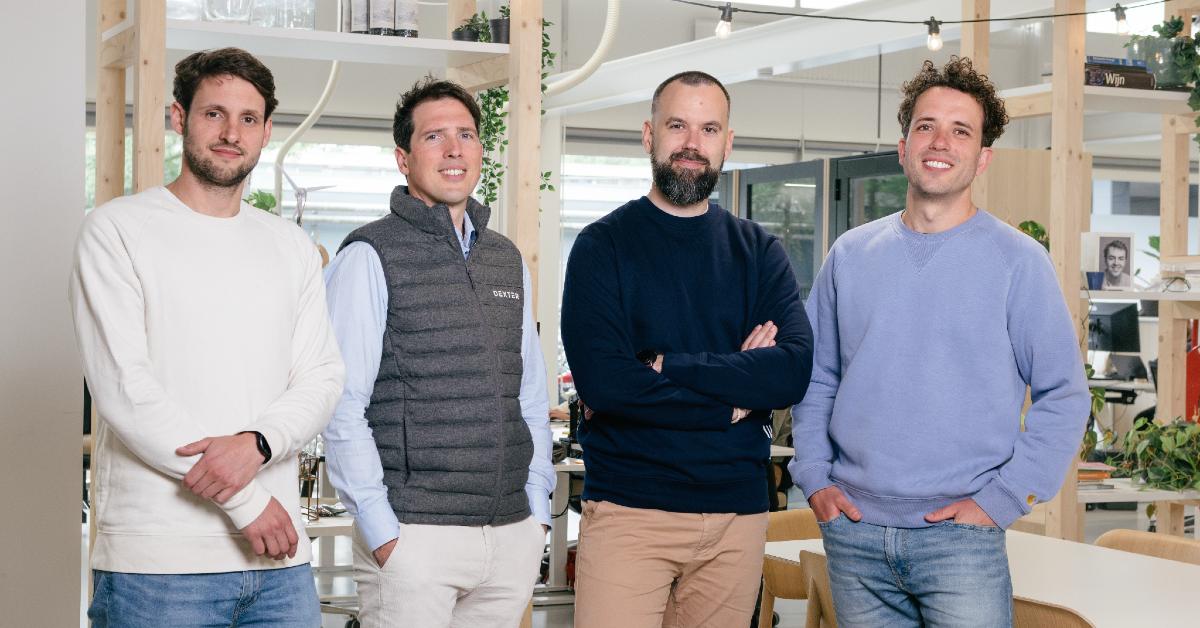“The original idea of the web was that it should be a collaborative space where you can communicate through sharing information.”
This quote from Tim Berners-Lee, the inventor of the World Wide Web, still forms the backbone of everything designed and built for the web. However, the web has increasingly moved towards a tipping point where it has not only become less collaborative but also inaccessible to many.
Not everyone is, however, sitting on the sidelines and watching this take effect. Amsterdam-based Surfly, for one, is building web technologies that look to truly enable online interactions with endless possibilities.
Better ways to interact online

Surfly was started by Nicholas Piël in 2012 to enable co-browsing, a technology that creates an online experience similar to one as if people were sitting side-by-side. The need to build this co-browsing feature stems from a very personal experience of Piël when he was working part-time tech support in 2008.
Piël recollects the moment when he had to help an older, less tech-savvy customer who was unable to solve a technical issue on her PC. “It took me several hours to (successfully) resolve the issue over the phone with her, and I kept wondering if there could be a better way,” he says.
The experience made him realise the need for better ways to interact online and he began working on the first Surfly prototype. Since that humble beginning, Surfly has grown to over 30 employees and serves over 200,000 users globally.
Surfly is designed to instantly transform any web application into a collaborative space. “We enable a fully collaborative experience where all participants can share content simultaneously – with full control over the session and its content,” Piël says.
While Surfly offers a lot of features (more on that in a bit), Piël says co-browsing is the feature most used by its customers. Through collaborative browsing, Surfly customers are able to navigate and interact with a web page together in real-time. This allows for a two-way interaction not possible with screen sharing features found on platforms like Zoom, MS Teams, or Google Meet.
Since it only shares the website or web application and not the entire desktop of the user, co-browsing is also safer than screen sharing. “The entire interaction occurs in a single browser tab and participants never gain access to any other part of the user’s device,” Piël explains.
One-way sharing versus two-way sharing
Piël says that users have become adept at interacting with others online, especially at using Zoom calls and working remotely due to the pandemic. However, these new tools come with their own challenges, including security lapses either in the form of personal data leaks or unknown people joining the call and disturbing other participants.
However, an even bigger challenge is that these tools only allow one-way sharing of content. “For example, if a website is shared with other users via screen sharing, only one person is interacting with that website, while all others are passive listeners,” Piël says.
With Surfly, Piël and his team have built a web-friendly service that prioritises security and privacy of its users. It does this by allowing users to choose to share only a single browser tab with the specific content they want to share instead of the entire desktop.
Piël elaborates, “We also enable masking of content, so if a user is filling in sensitive information, such as card details, we can mask it from the other users. Additionally, the person that shares the content, owns it.”
The USP of Surfly is that it truly aims to enable customers to create an experience that is very close to the in-person experience. The fact that it does this without the need for any setup or installation is surprising but two-way collaboration is definitely not a pipe dream with a product like Surfly.
Piël explains that they are able to do this because they don’t need to integrate anything at all. “Our Interaction Middleware technology sits in between a user’s browser and the website or application they’re using, and layers new features onto the existing code,” he says.
Getting started quickly

Surfly’s interaction technology for the web is the need of the hour for a wide range of industries. However, to get started quickly, the company has collaborated with Salesforce and is even about to offer its app on the AppExchange, which enables new customers with a standardised solution.
Piël says, “We view our Surfly Salesforce App as a value-add to customers, that enables them to access Surfly with an even lower barrier to entry, within a platform their users are already used to working in.”
A number of Surfly’s customers have already integrated Surfly into Salesforce and it therefore made sense for them to collaborate with the CRM pioneer. Surfly also uses Salesforce internally – including key products like Sales Cloud, Service Cloud, and Pardot.
Piël says Salesforce plays a key role in connecting the dots between all of Surfly’s GTM teams as well as the service team. “This helps us generate insights about the effectiveness of the initiatives we run, which we use to make decisions to drive our organisation forward,” he says.
For Surfly, Salesforce has also played a key role in enabling the company to make data-driven decisions. Piël even calls it their single source of truth for all commercial data.
Breakeven by the end of the year
Piël says the short term goal for him and Surfly is to reach breakeven by the end of the year and he confirms that the company is well on track to achieve this goal. Once accomplished, Surfly wants to focus on building upon this year’s growth and enable “more customers with full control over their online interactions.”
The Dutch company is also actively hiring across sales and engineering and plans to increase its presence in North America. For younger entrepreneurs, Piël says it is important to “surround yourself with the right people.”
“Don’t hesitate to invest time into hiring the right ones, as they’re the ones that will carry you through the more turbulent times,” Piël concludes.










01
From telecom veteran to Dutch Startup Visa success: The Jignesh Dave story